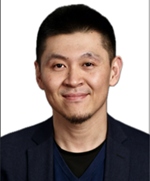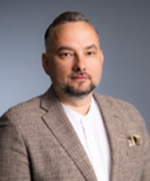SPECIAL SESSION
Special Session 2: Enabling Next-Generation Non-Terrestrial Networks and the Low-Altitude Economy: Communication, Networking, and Sensing
Non-terrestrial networks (NTNs), spanning satellites, high-altitude platforms, and dense low-altitude aerial systems, are becoming the key enablers for next-generation global connectivity and the emerging low-altitude economy. Free-space communication and networking technologies, operating across both radio and optical frequency ranges, and are uniquely positioned to meet NTN requirements for high-speed throughput, low latency, and energy-efficient operation under challenging dynamic environments. This session will explore innovations that merge communication, networking, and sensing to realize intelligent, secure, and adaptive NTN infrastructures. It welcomes contributions across device, subsystem, and system levels, including novel mid-infrared and multi-band photonic devices, turbulence-tolerant optical front-ends, hybrid RF/THz/optical integration, adaptive beam control, and AI-enabled network management, as well as emerging applications such as real-time situational awareness, precision aerial logistics, environmental monitoring, and quantum-secured communication within space-air-ground integrated systems.
Related topics: (此专题涉及的征稿主题)
- Low-altitude free-space communication links for UAV and HAPS constellations supporting 6G backhaul and access networks.
- Novel devices (lasers, modulators, and detectors) enabling compact, high-power, and thermally robust NTN optical transceivers.
- Joint communication-and-sensing (ISAC) systems for beam tracking, obstacle detection, weather adaptation, and air-traffic coordination.
- AI-driven beam steering, adaptive optics, and channel prediction to mitigate turbulence, vibration, and pointing errors in dynamic NTN environments.
- Hybrid RF/THz/optical networking architectures for multi-layer NTN connectivity, supporting intelligent handover and cooperative relaying.
- Reconfigurable optical payloads and multi-band front-ends for satellites and UAVs to dynamically adapt to spectrum, mission, and energy conditions.
- Cross-layer signal processing and coding techniques for turbulence-aware, low-latency, and high-reliability optical NTN transmission.
- Network orchestration, routing, and topology optimization across space-air-ground layers for optical NTN resource efficiency.
- Experimental testbeds, field trials, and prototyping for FSO/THz/optical NTN integration in real-world low-altitude or maritime scenarios.
- Applications in the low-altitude economy including autonomous delivery, intelligent inspection, precision agriculture, and environmental sensing.
Submit Method:
1, Submit it via the link: http://confsys.iconf.org/submission/icece2025 (after entering the link, click on the corresponding topic)
2, Send your manuscript to icece_conf@vip.163.com with subject "Submit+Special Session-2+Paper Title". (请通过邮件发送稿件,邮件题目:Submit+Special Session-2+Paper Title)
3, Submission deadline: December 05, 2025

Prof. Xiaodan Pang, Zhejiang University, China
Xiaodan Pang is a Qiushi Distinguished Professor at Zhejiang University. He received his PhD in Photonics Engineering from the Technical University of Denmark in 2013. His research specializes in high-speed optical communications, including fiber-optic, free-space, and photonic-wireless systems. Xiaodan Pang has authored or co-authored over 200 publications in leading journals and conferences, including Nature Communications, Journal of Lightwave Technology, and several postdeadline papers at OFC and ECOC. He has delivered more than 40 invited talks at international conferences and workshops, such as OFC, ECOC, OECC, and ACP. He served as the Program Chair for OFC 2025, General Co-chair for PGC 2023-2024, among others.
Prof. Oskars Ozolins, Riga Technical University, Lativa
Oskars Ozolins is a Tenured Professor at Riga Technical University, Latvia, and a Senior Scientist and Technical Lead at the RISE Research Institutes of Sweden. He is an Academician (full member) at the Latvian Academy of Science. He is also the Latvian Council of Science Expert in Committees: Engineering, Computer Science, and Physics. He is the author of around 300 international journal publications, conference contributions, invited talks/tutorials/keynote/lecture, patents, and book chapters. His research interests are in the areas of fiber-optic communications, photonic-wireless systems, optical signal processing, and high-speed short-range transmission. He has been a TPC member of premier conferences such as ECOC, OFC, among others.

